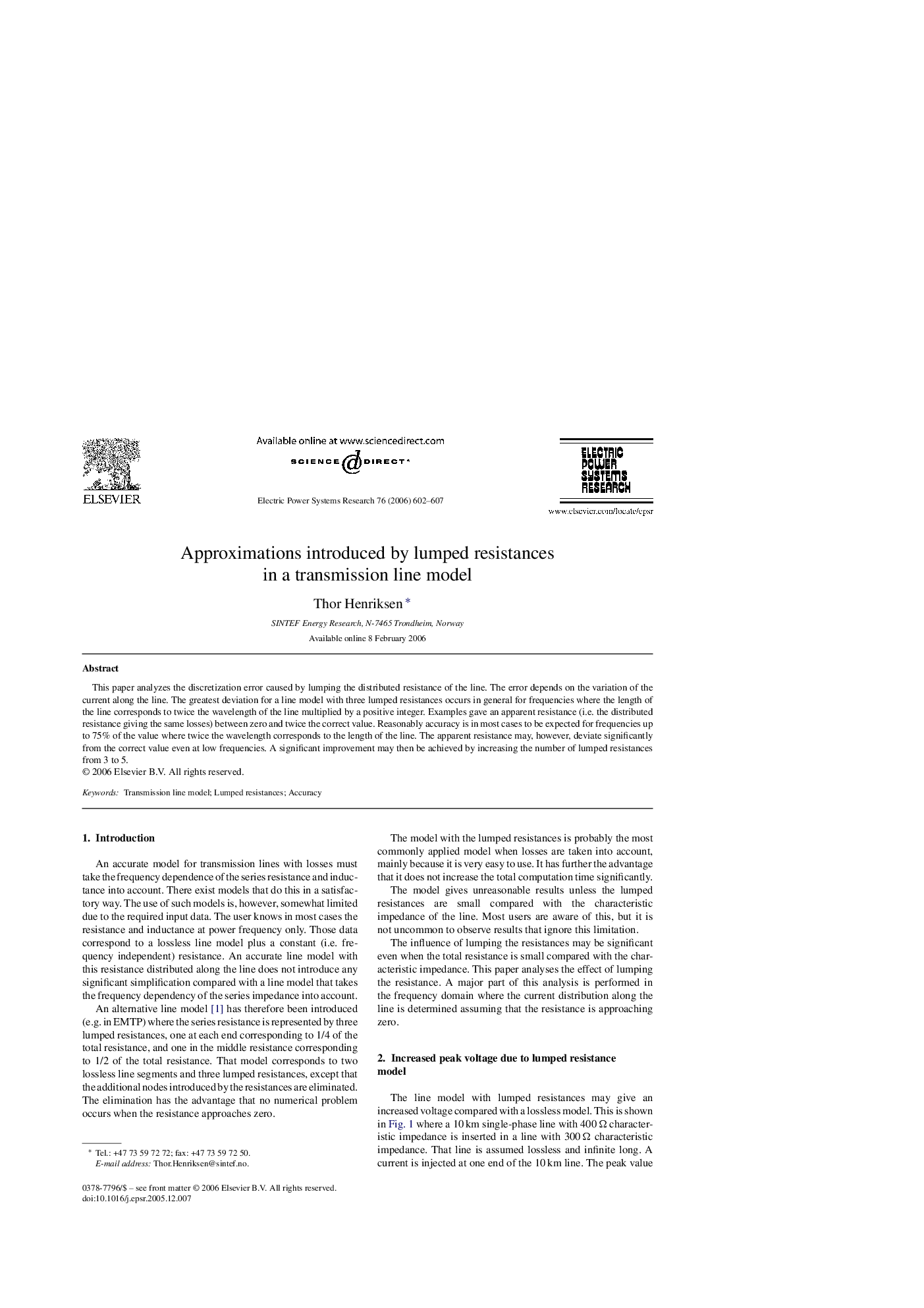| Article ID | Journal | Published Year | Pages | File Type |
|---|---|---|---|---|
| 706006 | Electric Power Systems Research | 2006 | 6 Pages |
This paper analyzes the discretization error caused by lumping the distributed resistance of the line. The error depends on the variation of the current along the line. The greatest deviation for a line model with three lumped resistances occurs in general for frequencies where the length of the line corresponds to twice the wavelength of the line multiplied by a positive integer. Examples gave an apparent resistance (i.e. the distributed resistance giving the same losses) between zero and twice the correct value. Reasonably accuracy is in most cases to be expected for frequencies up to 75% of the value where twice the wavelength corresponds to the length of the line. The apparent resistance may, however, deviate significantly from the correct value even at low frequencies. A significant improvement may then be achieved by increasing the number of lumped resistances from 3 to 5.
